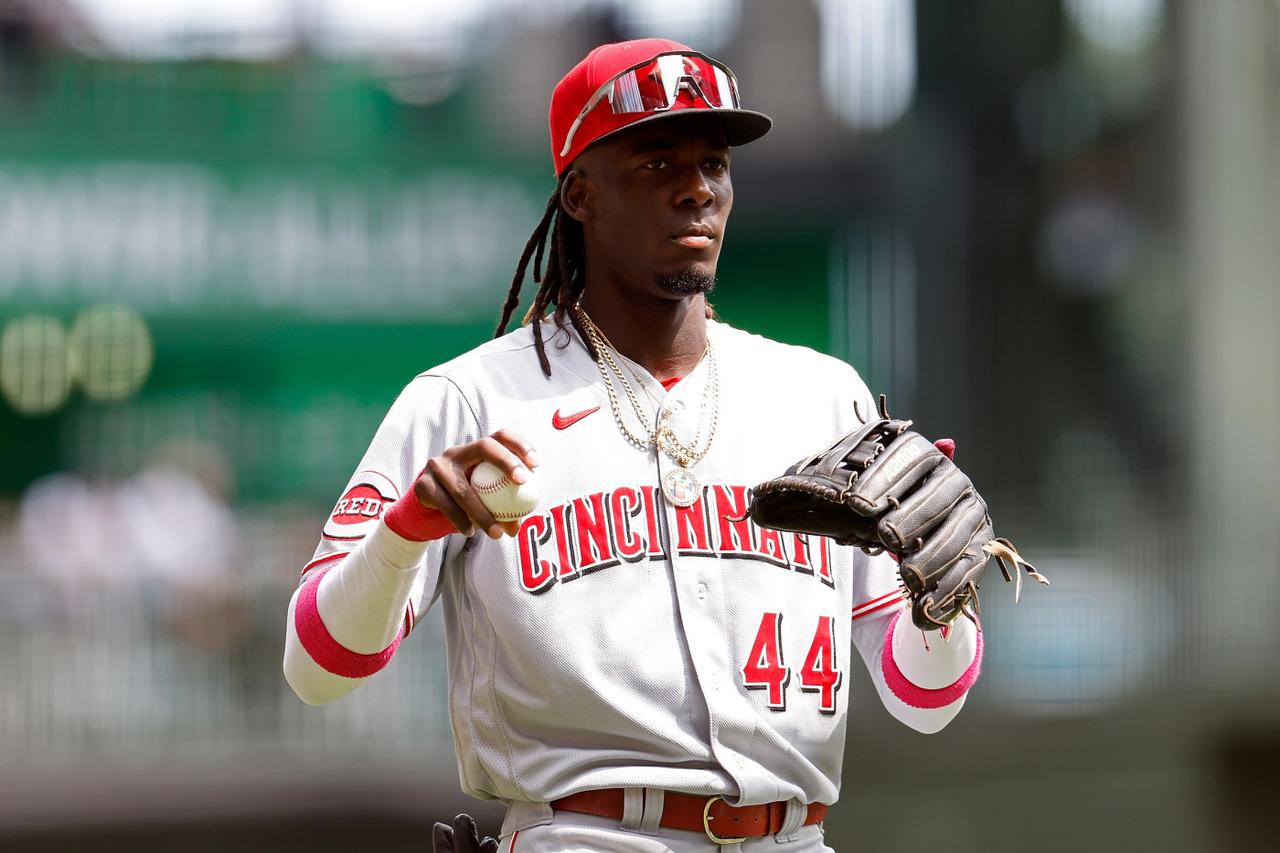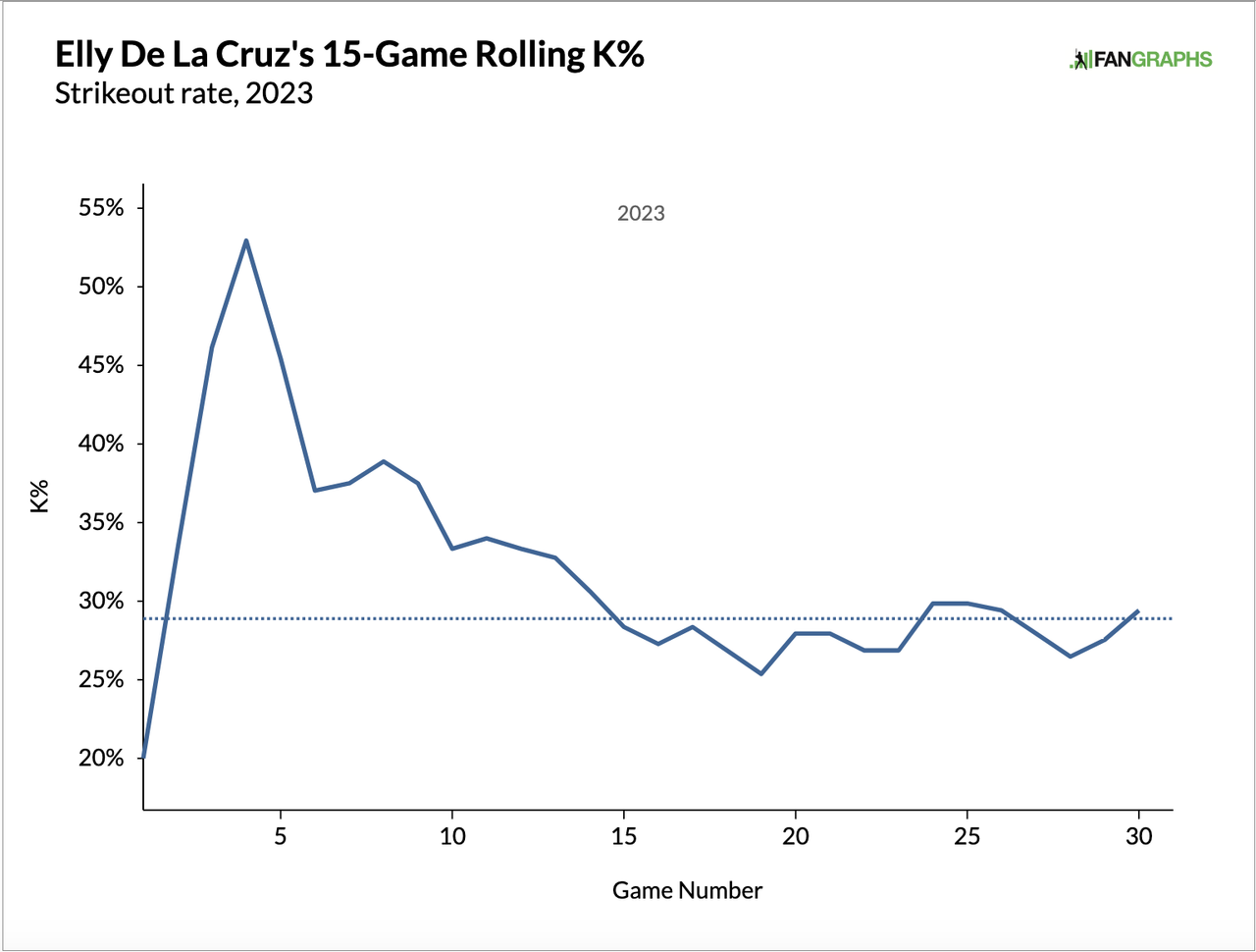Tuma: 9 Thoughts on 7th Inning Stretch ADP

Right now on Underdog Fantasy you can draft a 2nd half best ball team to compete for the 7th Inning Stretch's top prize of $30,000.
The contest (including all the rules) can be found by clicking here.
My rankings were updated on July 3rd. The google sheet they're in can be found here, and you can download them as a .csv to upload directly into UD (while using a desktop) if you'd like. Reach out on Twitter if you need help doing that.
I'll also be discussing macro and micro strategies for this contest all week in my Discord, which is available for Patreon subscribers. (A Patreon subscription comes with dynasty content, prospect profiles, redraft analysis, and more).
Lastly, here are some macro strategy pieces for Underdog best ball from this past offseason. Everything still applies for the 7th Inning Stretch:
Let's dive in!
Tuma: 9 Thoughts on 7th Inning Stretch ADP
1. While outfield scarcity isn't as big of a deal this time around, it still exists. This has gotten even more dramatic recently as we've seen multi-week injuries to Aaron Judge, Yordan Alvarez, and Mike Trout.
Bryce Harper, who was "added" to the top of drafts after being a mid-round pick in the winter, has disappointed. He hasn't homered since May 25th, recording a .059 ISO during that stretch. I no longer think he's in contention for Round 1 on Underdog.
In my opinion the first 6 picks of the draft should be (in some order) Acuña, Ohtani, Tatis, Soto, Mookie, and Corbin Carroll. Freddie Freeman, Jose Ramirez, Vlad Jr., and Spencer Strider all belong in Round 1 as well. J-Rod and Kyle Tucker (slight "reaches" due to OF eligibility) round out my personal top-12.
2. Whether or not you get a top-6 outfielder in Round 1 might depend on your draft slot, which you don't control. If you miss on that group then you need to decide if you're willing to gamble on Yordan, Judge, or Trout.
Yordan has an ADP of 15 overall entering Monday. The latest info we have on him (via MLB.com) is that he took batting practice on the field for the third day in a row on Sunday:
"Alvarez took batting practice on the field Sunday for the third day in a row. Astros manager Dusty Baker said there was a chance Alvarez could face José Urquidy during his two-inning simulated game Sunday. Alvarez has been sidelined since straining his right oblique while swinging the bat on June 8."
That same article has his estimated return as "mid-July or later." He still needs to go out on a rehab assignment before rejoining the Astros. The best case scenario for him would be to begin that immediately after the All-Star break.
The first "round" of the 7th Inning Stretch (AKA this contest's "regular season") is only four weeks, so any missed time is a huge deal for your second selection in drafts. Still, he seems close enough to a return that I don't mind taking him there if I miss on one of the top-6 outfielders.
3. As for Judge, this piece from MLB.com pegs his return for "possibly August." The full write-up:
"Judge has been playing catch in the outfield and hitting off a tee. He also performed overhand soft toss drills and jogged on an anti-gravity treadmill on July 5, according to manager Aaron Boone, who said that Judge’s progress is “moving in the right direction.”
While Judge said that he has ruled out having surgery on his toe during the season, he has not ruled out offseason surgery. The slugger added that he is not sure if he will travel to Seattle for All-Star Game festivities, indicating that it might be best to stay behind and continue rehabbing the toe.
Judge resumed baseball activities on June 28 in Oakland, playing catch for the first time since injuring his toe. He received a second platelet-rich plasma injection on June 15, intended to address discomfort in a second ligament near his right big toe. Judge referred to his injury as a torn ligament on June 24, the first time he had publicly mentioned that diagnosis.
Judge received his first PRP injection on June 6 for the injury, which stemmed from a terrific catch on June 3 at Los Angeles. He was diagnosed with a contusion and sprain once the team returned to New York; manager Aaron Boone said that doctors had ruled out a fracture. (Last updated: July 6)"
Judge's ADP sits at 18.5 overall, and taking him feels much riskier than Alvarez after reading that update. As much of a "hammer" as he could be for best ball lineups in the playoff weeks, taking him this early will hurt your chances at advancing out of Round 1.
Only the top 2 teams from each 12-person draft will advance out of Round 1 (which, remember, only lasts four weeks). With Round 2 draft capital, advancing Judge teams feels particularly challenging right now. He'd need to return by early August to have a real shot at impacting the "regular season" weeks.
4. Lastly, we'll touch on Trout's situation as he's the other notable early-round injury decision that needs to be made in drafts. He also has an expected return description of "possibly August":
"Trout underwent surgery to remove his left hamate bone on July 5. His timeline to return is four to eight weeks with six to eight weeks being more likely. He sustained the injury after fouling off a pitch on July 3. Trout met with the media on July 7 and said everything went well with the surgery.
"The quickest route to get back on the field was having the surgery," Trout said. "It feels good. I just have to let it heal. I'm glad I got it done because It feels a lot better." (Last updated: July 7)"
Using the 6-to-8 week timeline puts his earliest return at August 18th, which is after Round 2 of the 7th Inning Stretch begins, and you would have needed to advance to begin using Trout's points at all. While Judge's situation is murky enough to where he could return first, we basically know for certain that Trout won't contribute at all to the first four weeks of the contest, and he could be out longer.
It's admittedly a very tough rank, but Trout's current ADP is 41.8, and it's hard to imagine taking him within the first 4 rounds of drafts. Again, he could also be a playoff hammer, but it'll be very tough to advance him to the tournament's most crucial rounds.
He's at least coming at more of a discount, though, which makes Judge's price feel even less palatable.
5. Shifting away from injury news and back to overall ADP thoughts, the weakened OF pool gives my projections only two "values" between Rounds 3-6. Those two are Cedric Mullins and Kyle Schwarber in Round 3.
That doesn't mean you can't take an outfielder in those rounds. Randy Arozarena, Luis Robert, Adolis Garcia, Michael Harris, and Christian Yelich, among others, could have big performances.
But it's important to highlight how much better infielders project in this range. When all the "value" in these rounds come from infielders and pitchers, I don't want to be needing to reach on OF to catch up.
6. My favorite way to fill in my outfield after this range is to target Ian Happ, Seiya Suzuki, Daulton Varsho, Giancarlo Stanton, and Jordan Walker. Unfortunately, ADPs for JD Martinez and Eloy Jimenez have moved up over the past week. They're still worth considering at cost, however.
7. I'm sorry, but I cannot support Elly De La Cruz's 14.6 (!!) ADP right now. I wasn't supporting it at 40.8, so at this point if you're underweight on Elly I recommend a full-on fade.
I'll be writing about what we've seen from him so far this season on my Substack this week (free to subscribe here).
But the basic idea is that while Elly is undeniably incredible, you're paying for his absolute ceiling outcome at this price. His BABIP sits at .440 right now, and yes his elite speed means he'll run high BABIPs in his career, but that's just too high to be sustainable. Every projection system gives him between a .334 and .359 BABIP rest-of-season. That's the sort of "high BABIP" I'm willing to peg him for based on his tools.
I'll also give him a ton of credit for keeping the strikeouts in check:

His 28.9 K% entering the break is right around league average. While it's still important to track his strikeouts moving forward, it clearly doesn't appear as if they will be a major issue for his rookie year production. That wasn't a given prior to his debut, and it's a big deal.
And yet, this is still such a premium price to pay for an unproven player. Anything can happen in the four weeks of Round 1 play. A hot month for Elly will mean he can still pay it off, but that's true of anyone.
And at this point even if you advance an Elly team, you'll be competing against other rosters who took him at much better prices.
That's a really important part of this. Within your initial 12-person draft group, you'll be the only one with Elly. But once (if) you move on to Round 2 of the contest, there could be other Elly teams who drafted him in Rounds 3-20.
Yes, while the majority of Elly picks have been inside the top 100 post-promotion, I know of some drafters who were taking him in the 200s before his call-up. And you might need to compete a team who had access to ADP values you don't have this week. This contest has been being drafted since May, remember.
Anyways, regardless of how Elly performs in the second half, there's so much leverage to be gained from simply fading him at this point. It's like walking into a DFS contest without the chalk - in a big tournament you want to do that every time. And then you add the fact that you're using a pick on an infielder right when the infield values start to get really, really rewarding.
8. Let's talk about those infield values. One of the biggest reasons I don't want to reach on outfielders in Rounds 3-6 is because I don't want to be passing up Paul Goldschmidt, Marcus Semien, Trea, Turner, Austin Riley, and Rafael Devers.
Why does Rafael Devers have an ADP in the middle of Round 3?
He's a borderline top-15 overall player in this format.
Bo Bichette is another excellent IF pick in Round 3. Francisco Lindor, Manny Machado, and Bobby Witt Jr. looks like great selections in Round 4.
Then there's the middle rounds where Alex Bregman, Christian Walker, Matt Chapman, Max Muncy, and Willy Adames all project soooo well. Regardless of whether or not you feel outfield is deep, and can be waited on, we also need to factor in opportunity cost. So taking outfielders over these mega IF values is costly.
9. As for late-round hitting values, there's a number of them, which is why I like being done with my pitching staff early on. Hitter projections really "flatten" at a certain point, and I'm never satisfied when I'm relying on multiple late-round arms.
Some of my favorite mid-to-late round hitters (at cost) include Eugenio Suarez, Joc Pederson, Andres Gimenez, Lars Nootbaar, Ezequiel Tovar, CJ Cron, Jake Cronenworth, and Triston Casas.
(Notice it's a lot of infielders!)
My initial plan was to include pitcher thoughts in here, but I went too long on all the bats! I'll do my best to get another article up today or tomorrow talking pitchers. In general, I want roughly 5 within the first 10 rounds. Yes, it's aggressive, but a dominant staff is a way to differentiate come playoffs.